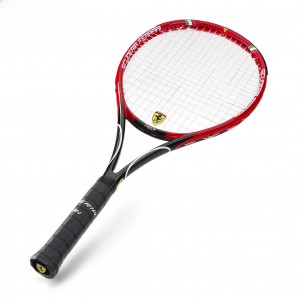After Huawei found itself on Watch Good Looking Girl Onlinethe "entity list," which banned it from buying products and components (including licensing Google's Android) from U.S. companies, the Chinese giant teased its own smartphone operating system.
Now, that OS has officially been launched as HarmonyOS -- but it's not exactly focused on smartphones.
Revealed at the Huawei Developer Conference in Dongguan, China, by the company CEO Richard Yu, HarmonyOS is a "distributed OS" that lets developers develop their apps once, then "flexibly deploy them across a range of different devices."
This is in contrast to Android and Apple's iOS, which are separate (though partially compatible) with the companies' other platforms.
This means that HarmonyOS will, in theory, offer the same experience on a variety of devices, such as smart TVs, tablets and phones. In practice, though, Huawei first plans to deploy HarmonyOS to a product called the Honor Smart Screen, would be unveiled this Saturday and launch later this year.
Over the next three years, HarmonyOS should arrive to other devices, including wearables and cars.
This is more akin to Samsung's Tizen, which was also once touted as an alternative to Android but is now mainly powering the company's smart TVs and wearables.
SEE ALSO: Less than 1 percent of Huawei P30 Pro parts come from the U.S., teardown revealsBesides its distributed nature, Huawei also highlights HarmonyOS "microkernel architecture," meaning the OS' kernel will be extremely small, making HarmonyOS both fast and resilient to attacks. There's also something called "Deterministic Latency Engine," which should make HarmonyOS better at prioritizing tasks and scheduling them in advance, which, again, should improve performance.
This Tweet is currently unavailable. It might be loading or has been removed.
Notably, Google is also working on a microkernel-based, multi-platform operating system called Fuchsia.
HarmonyOS will be released as a worldwide, open-source platform. However, Huawei says it plans to "lay the foundations" of HarmonyOS in China, and expand globally later.
Huawei's position in the U.S. has improved somewhat in June, with president Trump allowing the company to buy some U.S. technology. This could mean that Huawei will be able to continue producing Android-based smartphones as before, while slowly developing HarmonyOS as a sort of backup.
Topics Huawei
(Editor: {typename type="name"/})
 Apple is advertising on Elon Musk's X again
Apple is advertising on Elon Musk's X again
 Sharon Olds, “Diagnosis” by Sadie Stein
Sharon Olds, “Diagnosis” by Sadie Stein
 Hilarious Pennsylvania memes flood Twitter after Biden takes lead
Hilarious Pennsylvania memes flood Twitter after Biden takes lead
 The Fitzgerald
The Fitzgerald
 Is AI porn the next horizon in self
Is AI porn the next horizon in self
NYT Connections Sports Edition hints and answers for February 11: Tips to solve Connections #141
 Connections: Sports Editionis a new version of the popular New York Times word game that seeks to te
...[Details]
Connections: Sports Editionis a new version of the popular New York Times word game that seeks to te
...[Details]
 “Things Grown-Ups Talk About”By Sadie SteinJanuary 18, 2013Arts & CultureToday is A. A. M
...[Details]
“Things Grown-Ups Talk About”By Sadie SteinJanuary 18, 2013Arts & CultureToday is A. A. M
...[Details]
Conspiracy Theories, and Other News by Sadie Stein
 Conspiracy Theories, and Other NewsBy Sadie SteinJanuary 15, 2013On the ShelfLiterary conspiracy the
...[Details]
Conspiracy Theories, and Other NewsBy Sadie SteinJanuary 15, 2013On the ShelfLiterary conspiracy the
...[Details]
 ThunderStickBy Pamela PetroJanuary 14, 2013First PersonIt came in a box. A big box, with two or thre
...[Details]
ThunderStickBy Pamela PetroJanuary 14, 2013First PersonIt came in a box. A big box, with two or thre
...[Details]
Collins vs. Jabeur 2025 livestream: Watch Adelaide International for free
 TL;DR:Live stream Collins vs. Jabeur in the 2025 Adelaide International for free on 9Now. Access thi
...[Details]
TL;DR:Live stream Collins vs. Jabeur in the 2025 Adelaide International for free on 9Now. Access thi
...[Details]
Carol Summers, Untitled, 1967 by The Paris Review
 Carol Summers, Untitled, 1967By The Paris ReviewJanuary 17, 2013The Print SeriesSince 1964 The Paris
...[Details]
Carol Summers, Untitled, 1967By The Paris ReviewJanuary 17, 2013The Print SeriesSince 1964 The Paris
...[Details]
13 of the nicest moments from Election Day
 Election night has arrived, which means you're likely feeling anxious as hell as we wait for results
...[Details]
Election night has arrived, which means you're likely feeling anxious as hell as we wait for results
...[Details]
Climate activist Greta Thunberg participates in her last school strike
 Greta Thunberg, one of the most recognizable young climate activists on the planet, is on the 251st
...[Details]
Greta Thunberg, one of the most recognizable young climate activists on the planet, is on the 251st
...[Details]
Is AI porn the next horizon in self
 The AI revolution is well and truly upon us. As we grapple with the ramifications of generative AI i
...[Details]
The AI revolution is well and truly upon us. As we grapple with the ramifications of generative AI i
...[Details]
Consent campaign puts message on condom packaging
 It's 2023, and our understanding of consent still isn't up to par. Perhaps due to the lack of sex ed
...[Details]
It's 2023, and our understanding of consent still isn't up to par. Perhaps due to the lack of sex ed
...[Details]
接受PR>=1、BR>=1,流量相当,内容相关类链接。